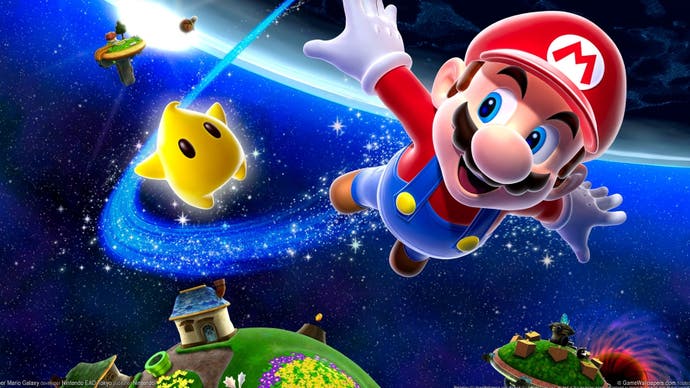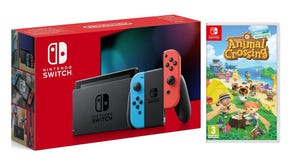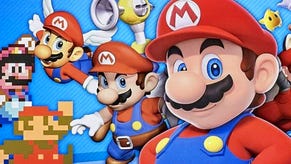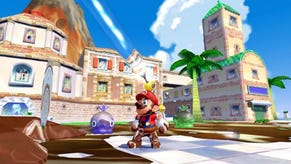Super Mario 3D All-Stars review - three great games in one lacklustre compilation
Boo.
I just don't get Nintendo sometimes. If you want a microcosm of the head-scratching conundrum you'll often find at the heart of the company it's here in this, Super Mario 3D All-Stars. Here are two of the greatest games ever made - and Super Mario Sunshine - in a compilation that's in so many ways lacklustre.
That moniker Nintendo has gone for with this three game bundle - bringing together Super Mario 64, Super Mario Sunshine and Super Mario Galaxy - doesn't help. The original Super Mario All-Stars, released back in 1993 on the SNES, was a fairly comprehensive run through all the mainline 2D games to date. It wasn't just a compilation either - there was a significant visual makeover that gave everything the same Super Nintendo sparkle, improved the audio and introduced save files for the older games. It was more a series of remakes than a remaster.
Super Mario 3D All-Stars, in comparison, can sometimes feel like nothing more than a ROM dump. It is more than that - thankfully - but it still feels like less than it could be. It is not in any way comprehensive - the decision to cut aside Super Mario 3D World for its own re-release next year makes some sort of sense, while the decision to not include Super Mario Galaxy 2, effectively an expansion pack for the original Galaxy which is here in all its glory, does not. Whereas I'm not sure whether the original All-Stars were remakes or not, I'm not sure you can even call the games in 3D All-Stars remasters.
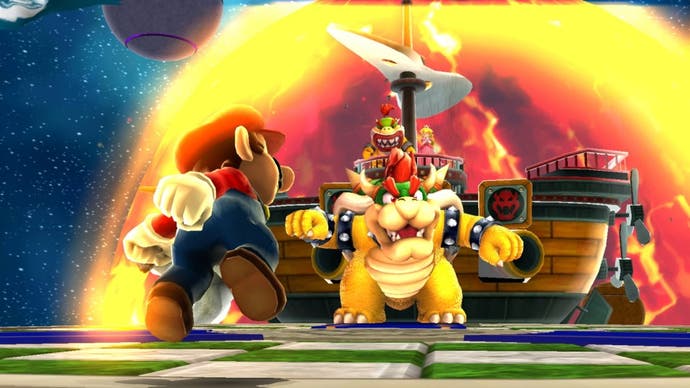
Super Mario 64 and Super Mario Sunshine remain at their original 30fps. Sunshine gets pushed gracefully into 16:9, which helps smooth but not completely remove the problems with its awkward camera. Super Mario Galaxy's motion controls remain embedded, making handheld play tricky to the point of frustration. These feel more like transfers than anything - faithful to the originals with only the lightest of touches applied in the porting process.
And I can understand the approach. These are precious masterworks - well, two of them are - that demand handling with the utmost care, lest Mario ends up all Ecce Homo. People might point to some of the recent 4K, 60fps fan-made remakes of Super Mario 64 that have been doing the rounds of late, with their redrawn characters and elaborate new textures, to make harsh comparisons, but I've put both side by side and I know which I'd rather play. There's something about Super Mario 64, with all its quirks intact, that feels just right.
Not that there are too many flaws, of course. Super Mario 64 remains a staggering piece of work, as entertaining and bewitching as it was back in the day, and 3D All-Stars presents the first chance many will have to play the Shindou Edition - a gently tweaked version that launched in Japan back in 1997, adding force feedback that you'll feel in the Switch's HD rumble and making a handful of other fixes along the way (and with the telltale introduction of a new easter egg on the title screen). In essence, though, this is the Super Mario 64 that you'll have played back in the day - perhaps like me, slack-jawed and leaning into a 14-inch CRT, marvelling at how Nintendo had mastered 3D gaming at the first attempt.
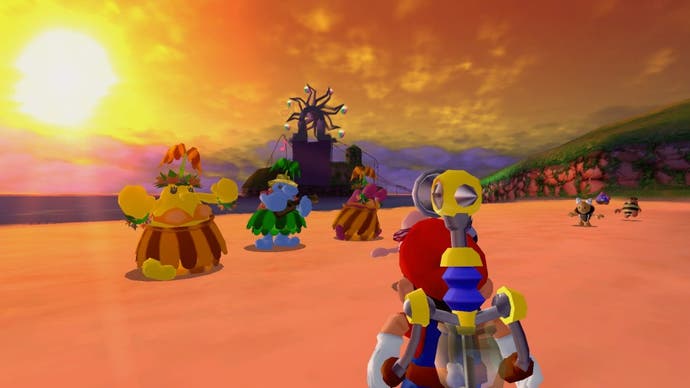
Super Mario 64 wasn't the first 3D game, but it's one of the first with such an innate understanding of the possibilities of that added dimension, not just transposing the 2D Mario experience but reinventing it in the process. It's about space, about exploration, and more often than not about nothing more than the thrill of movement - indeed, it's arguably the first 3D game that offered the same fidelity of control as Nintendo's 2D platformers, and good lord what they do with it. Even nearly a quarter of a century on, Super Mario 64 stands as one of Nintendo's finest achievements.
Which is why it was so baffling how wayward the next mainline Mario ended up. Super Mario Sunshine isn't a disaster - it's of a quality that most other developers would dream of hitting - but when put in the direct company of 64 and Galaxy it comes up short. It's a scrappy, chaotic thing, riddled with the kind of oversights you wouldn't expect of Nintendo's top-tier titles - the camera's a jerk, objectives are often wooly or downright cruel and, even in this gently rejigged version, it lacks the polish of the very best Mario games.
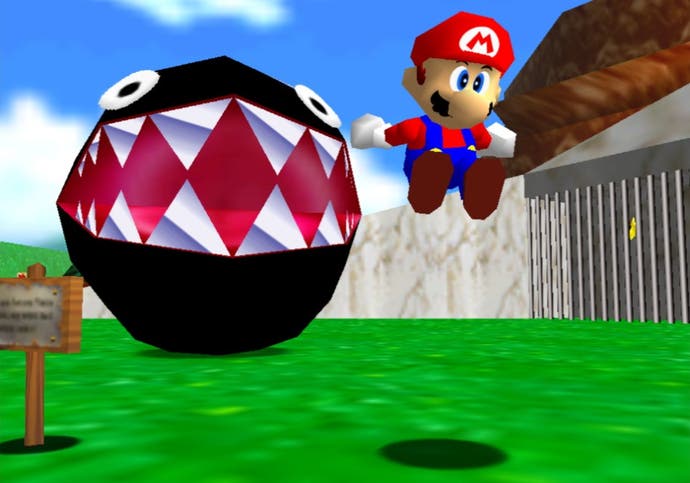
None of which stops it still staking a claim to being one of the better 3D platformers. Mario's FLUDD-enhanced moveset is sublime, with the man responsible for so much of the animation and character that made 64 special - Yoshiaki Koizumi - stepping up to the director's role for the first time. Which might explain Super Mario Sunshine's scrappiness, but also its exuberance - it's a game that, despite the stumbles, has a spring in its step, and can put a spring in yours with its tropical resort and all that cool, cool water and the dancing guitar and ukulele of Delfino Plaza's theme. It's enough to forgive its many frustrations.
Super Mario 64-2 it was not - that would arguably come later with Odyssey - but we did get to see a sequel worthy of that legacy. Super Mario Galaxy might be Mario's greatest adventure yet - it certainly is to my mind - and therefore one of Nintendo's very best games. It's deliriously inventive, taking Super Mario 64's exploration of space quite literally as it takes to the stars. It's a more linear thing, too, but its gravity is anything but - here's Nintendo freestyling with physics in the most glorious way, tossing the player from planet to planet and making the rules up as it goes along.
It's mad and magical, but it's the melancholy that really elevates it. Super Mario Galaxy is a fairytale set in the far beyond, a hub of warmth found in the icy void of space, complete with its own devastating storybook that never fails to bring me to tears. All this delivered with a blockbuster panache - that soundtrack! - and a rarefied polish. It's no wonder it looks so splendid in HD in 3D All-Stars, then, the exquisite art direction ensuring Super Mario Galaxy is still capable of taking your breath away all these years later.
It's not a perfect fit for the Switch, though. Motion controls are embedded at the heart of Super Mario Galaxy - this was a result of the Wii era, after all - and that remains the case here, which is fine if you're able to play with both Joy-Cons detached. If you're playing handheld, though - or playing on a Switch Lite - you'll have to make do with touchscreen controls to hoover up star-bits or partake in one of the numerous motion control-powered mini-games. It's frequent enough that you'll end up playing most of the time with one hand dancing between screen and controller, until you realise it's not really worth the fuss and saving Super Mario Galaxy sessions for when you can play it properly.
Surely there was another option, though when it comes to any optional extras Super Mario 3D All-Stars falls seriously short. There's a title menu where you can select games, play a song from any of their soundtracks and... That's it. There's not a single option for the emulators, no save states, no accompanying material such as manual reproductions, development insight or anything at all. Given it's intended as a celebration of Mario's 35th anniversary, there's a complete lack of ceremony to the whole thing. Put it alongside compilations and re-releases from the likes of Digital Eclipse or M2 and it's frankly pitiful. Standards have come a long way in recent years when it comes to collections like this, and Nintendo has stubbornly refused to keep up.
It's such a shame as there's so much to enjoy here. Perhaps all you need to know is that this is the best commercially available way to play two of the most magical, magnificent and downright essential video games in the medium's history (and to play Super Mario Sunshine too, of course). They're works of fascinating detail, exquisite design and an abundance of ideas - which makes it all the more baffling that Nintendo couldn't replicate any of that when bundling them all together.
